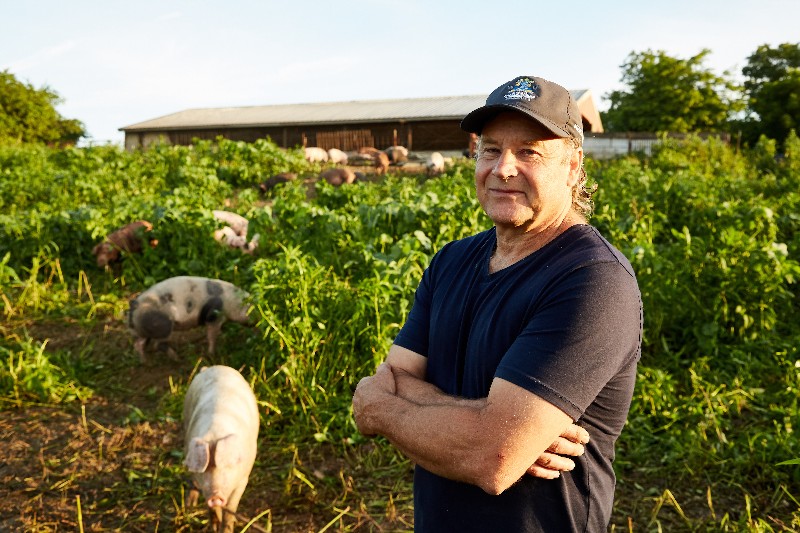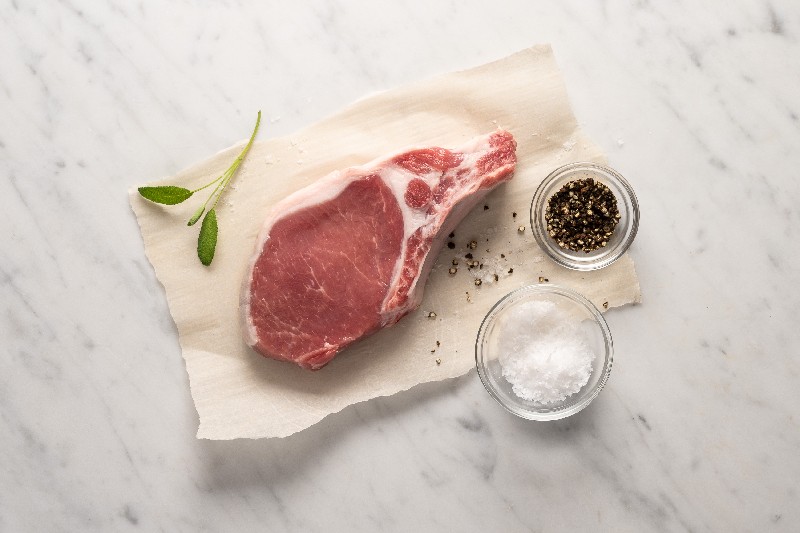If you’re wondering how a type of pork got an Asian-sounding descriptor, that’s because Kurobuta literally translates to “black pig” in Japanese. However, all black pigs are not necessarily the breed of pig that produces the coveted meat. Just as Wagyu beef translates to “Japanese cow,” but not all Japanese cows produce the elite Kobe beef.
Berkshire pig breeds are the black pig breeds behind the succulent pork that chefs and pitmasters alike are always trying to acquire. Berkshire pigs originated in England around 200 years ago and were sent to Japanese emperors as gifts in the 19th century. That’s why Russ Kremer likes to say that he raises the emperor’s pigs.

Russ Kremer is a 5th-generation farmer, the manager of Heritage Foods, and partner of True Story Foods — purveyors of sustainably and ethically raised clean meat products. So to say he’s just a pork expert wouldn’t be doing him justice. We reached out to Kremer to help get the real low-down on Kurobuta pork.
Read more: Best Bacon
What’s So Great About Kurobuta Pork?

We know that Kurobuta pork is expensive compared to commodity pork, over three times at much in fact. However, there are some distinct reasons for this; after you understand why you’ll probably be willing to fork out the extra dough.
Taste and Appearance
What’s immediately visible with the meat from Berkshire pigs is that it has a rosy-red hue. Unlike conventional pigs, it’s definitely not the other white meat.
“Fine ribbons of fat interspersed throughout the meat that makes it extremely tender and juicy when cooked. Berkshire pork has a higher pH content than conventional pork, which, when combined with the intramuscular fat content, keeps it juicy and flavorful. It also has a slightly sweeter taste than the leaner breeds that have become popular as a result of the ‘fat is bad’ movement of the 1980s. ” Said Kremer.
Kremer suggests that the best way to understand the taste difference is to do a side-by-side taste test of a Kurobuta pork chop (bone-in or out) and a regular store-bought chop. Grill it to 145 degrees with salt and pepper, and get ready to drool. “The very first time I tried Kurobuta pork was a chop I had at a restaurant 13 years ago. Even as a fifth-generation hog farmer, it was different from any other pork I had tasted.” Said Kremer. “I still remember that experience. I knew then and there that one day I wanted to create a Kurobuta program of my own, and here we are.”
Read more: Best Beef Cuts for Grilling
The Care
Like its Kobe beef counterpart, Berkshire pigs have a great life, even by some human standards. These pigs get to roam and frolic indoors or out whenever they want. They forage on the land and get a healthy dose of clean feed free of antibiotics and hormones (at least the farms that do it right, like True Story). These porkers live pretty stress-free lives, and when your animals are happy and relaxed, it shines through in the flavor of the meat. We don’t have to go into the horror stories of corporate hog farms with the single goal of churning out the largest pigs as quickly as possible.
Berkshire pigs are typically raised by small family farms, slowly and ethically. The extra price we pay for Kurobuta is not only because of the premium taste but also to provide a living wage to these small farmers to maintain the more costly sustainable farming practices.
The Hog’s Heritage
If you think a rack of Kurobuta pork ribs is expensive, imagine having to pay for the whole hog. When it comes to Berkshire hog quality, lineage plays a role. For example, Kremer has ensured that his True Story pigs come from a pure-bred, old-line of Berkshire hog genetics. There are a lot of imposters out there that try to pass off half-breed pigs as pure-bred Berkshire. But, make no mistake, the quality never matches up to the real thing. That’s why when distributing Kurobuta pork if you can prove your pork’s pure Berkshire heritage, you can charge a premium.



